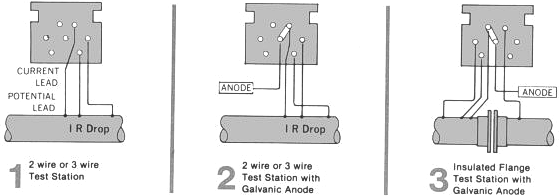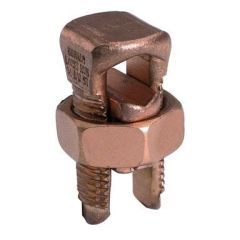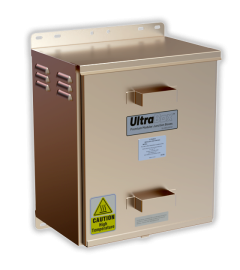Underground Test Stations by C.P. Test Services, Inc.
C.P. Corrosion Protection
"C.P.", manufacturer of non corrosive curb, valve, and drip boxes, has serviced the public utilities for over 32 years. This web page by Farwest features C.P.’s line of corrosion protection test stations. C.P. has been a pioneer in this field, manufacturing both standard test and custom test stations to meet specific requirements.
Many millions of dollars are spent annually by gas, electric, telephone and water utilities to protect underground metallic structures against corrosion. The C.P. Test Box is the hub of the entire cathodic protected system.
Cathodic protection, in effect, is only as good as the Test Box. You will find that C.P.’s test stations will meet the most stringent standards. They are time tested by some of the largest utilities in the United States.
Since cathodic protection is so essential today to maintain old installations, protect new ones against future corrosion, and, in particular, protect additions of new pipe lines to old, it follows that protection and accessibility are key features of the program. C.P. installations will provide these essentials as well as extra dependable features to insure long life. This is the pivotal part of the corrosion protection system.

Exclusive C.P. Test Station Features
- Non-corrosive, strong, durable ABS plastic
- Lightweight, easy to handle and store
- Break-proof in normal use
- Heavy cast iron lid and collar to withstand abuse of heavy traffic
- Non-conductive-plastic construction eliminates electrolytic and galvanic action
- Flared design prevents dislocation and reduces strain on wires
- Terminal block prolongs life of wires by minimizing wire movement and reducing chance of wire breakage
- Terminal blocks are made of polyester laminate reinforced with fiberglass.
- Machine screws and nuts are 1/4" 20 thread nickel plated.
- Lock washers are nickel plated.
4-Inch Cathodic Test Stations
- The 18" ABS plastic box has a 4" I.D. and also is standard with a 1-1/2" cast iron flange for heavy duty installation at grade level.
- "Adjustable to grade" test stations are available upon request.
- Terminal blocks are secured in place beneath the lid.
- Wires are automatically pulled up when the lid is removed.
- 0, 1, 2, or 5 terminals are available.
- 10 connections on 5 post-type terminals is also available.
- All terminals are made of solid brass.
- Boxes are flared and squared to prevent pull-out, turning or settling.
- Cast iron drop-in or one-piece locking lids marked "Test Station" are available.
- Custom lids are available for an additional charge.
- Terminal jumpers are available.
- Test terminals can be incorporated with Handley valve boxes.
- Underground installation protects the station from vandalism and is esthetically superior; however, above ground test stations are also available.
How to Order 4" Cathodic Test Stations
Build a model number like T43N2. Start with T4 for a 4" cathodic test station. Then fill in the remaining positions from the choices below. Tube length is 18". Lid color is silver. Please consult Farwest for any special requirements.
| Position 0. | T4 = 4" cathodic test station |
| Position 1. Number of terminals | 3 = 5 post type terminals on a board 5 = 5 screw type terminals on a board 6 = 0 terminals, NO terminal board |
| Position 2. Lid type option. Locking lids are standard. |
N = Non-locking |
| Position 3. Jumper option. | 1 = One jumper 2 = Two jumpers |
How to Order 4" Test Station Parts & Accessories
For replacement lids, build a model number like LIT43N1. Start with LIT4 for a 4" lid, then fill in the remaining positions from the choices below. The pentagon wrench is PW.
| Position 0. | LIT4 = Lid for 4" cathodic test station |
| Position 1. Number of terminals | 3 = 5 post type terminals on a board 5 = 5 screw type terminals on a board 6 = 0 terminals, NO terminal board |
| Position 2. Lid type option. Locking lids are standard. |
N = Non-locking |
| Position 3. Jumper option. | 1 = One jumper 2 = Two jumpers |
C.P. Mini Box
 
Plastic pipe, 2 1/2" I.D., 18" shaft length |
The unique design of Mini Box allows for more simplified testing. Leads are attached to a terminal block in the cap and securely fastened down. The entire cap assembly is easily lifted and tilted for testing.
A 2-point terminal box is standard. The block is secured in place beneath the cover. 4 or 5-point blocks also available. |

Heavy cast iron cover (locking) 2-point terminal box. |
Glenn 4 Test Station

Plastic pipe, 3 1/2" I.D., also available in 4" I.D. 18" shaft length. |
|

Heavy cast iron locking covers for protection on both Mini and Glenn 4. Patented Venti cover has a pentagonal bolt cast in the center, requiring only a quarter turn for locking. |

Terminal blocks are made of polyester laminate reinforced with fiberglass. Machine screws and nuts are 1/4" x 20 thread nickel plated. Lockwashers are nickel plated. Lightning gap type arresters can be set for a gap distance from 4 to 40 mils. Brass shorting straps supplied are approximately 40 mils thick and can be used as a gauge for setting gap distances. |
||
Typical Terminals

![]()
Glossary of Terms for Underground Corrosion
- Anode: A piece of metal, carbon or other conductor which loses or discharges current to a surrounding electrolyte.
- Lead: Length of wire used to complete a circuit from anode to pipe.
- Test Lead: A wire attached to a pipe for testing its potential to soil or its current.
- IR Drop: Voltage drop or resistance due to a current flow.
- Insulated: Separated by some material which is a very poor conductor.
- Potential E: A term specifying the driving force of an electrical circuit, commonly expressed in Volts. Analogous to pump horsepower in pipeline work.
- Cathodic Protection: A method of reducing or preventing corrosion of metallic structures by so impressing potentials on them as to make them cathodic throughout with respect to surrounding electrolyte.







